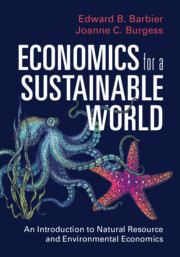The Economics and Ecology of the Risk of Invasive Plant Establishment from the Horticultural Trade in North America
Project Summary
The proposed research aims to develop an integrated economic and ecological analysis of the costs and benefits associated with the risk of invasive plant establishment from the horticultural trade in North America. The research encompassed: (1) Modeling the economic behavior of a profit-maximizing horticultural industry that imports an exotic plant species through establishing nurseries at specific geographical locations in North America. (2) Ecological and economic analysis of the risk and potential damages from accidental introduction and establishment of invasive plant species associated with a commercial plant industry that imports and breeds exotic plant species at its various locations. (3) Integrating these economic and ecological analyses to model the potential policy tradeoff between the profits of the commercial plant breeding industry with the expected losses associated with the risk of accidental introduction. (4) Evaluation of various policy interventions for reducing the risk of accidental introduction by the North American horticultural industry; for example, these might include: "doing nothing", self-regulation by the industry, taxing or banning the sale of exotic species and policy coordination between the US and Canadian governments. The overall objective of the project was to produce a new ecological-economic method of assessing the commercial decision of private nurseries in the US and Canada to sell exotic species and the accompanying risk of accidental introduction. Such research is of increasing importance to improve policies to control this problem in both countries and to decision makers seeking new tools and modelling methods to assist in the design of better policies. Principal Investigator/Project Director: Edward B. Barbier, John S. Bugas Professor of Economics, Department of Economics and Finance, University of Wyoming.Co-Investigators: Professor Sarah Reichard, (College of Forest Resources), University of Washington.
Professor Duncan Knowler, School of Resource and Environmental Management,
Simon Fraser University.
Funded by: PREISM, United States Department of Agriculture


